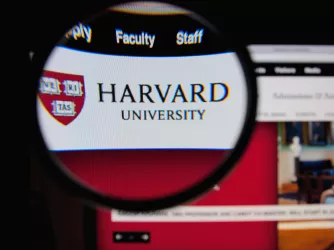Table of Contents
When the Truth is Too Outrageous to Parody
The following entry was authored by FIRE summer intern Braum Katz, a rising sophomore at the College of William and Mary.
In my freshman year of college, I became involved with The Pillory, William and Mary’s only satire and humor magazine. As expected, our first staff meeting consisted of an obligatory discussion on standards of decency in the parodies we would produce. Our editor-in-chief, a humorist wholly convinced of the power of satire, relayed a story that for the first time demonstrated how dangerously “chilled” satirical writing has become on college campuses. In turn, I will relay it here.
At the end of the 2005-2006 academic school year, the NCAA ruled that in addition to the mascots of 17 other schools, the two feathers that adorned William and Mary’s logo were potentially “hostile and abusive” to Native Americans. The absurdity of two feathers being deemed “hostile and abusive” made it difficult for the magazine staff to produce a parody any more outrageous than the actual decision. Nevertheless, one writer came up with a satirical story about possible replacement mascots. One of the suggested replacements was the “William and Mary slave-fucker,” a less-than-subtle reference to the College’s slave-owning roots. The Pillory staff opted not to run the article. I highly suspect they made this editorial decision out of fear of administrative reprisal.
A full year later, I heard about The Primary Source satire debacle at Tufts University. I immediately thought back to my experience at The Pillory. As an amateur satirist, and one whose publication had chosen to self-censor, I found myself envious of the courage The Primary Source had displayed in publishing an article far outside campus orthodoxy. It is not easy to take huge risks on reader reaction. If only the mainstream American press would take such risks as it once did—think, for example, of Thomas Nast and his scathing cartoon invectives attacking the corruption of Boss Tweed. The Primary Source’s political audacity was rewarded by a display of intolerance and viewpoint discrimination that essentially nullifies parody as a source of expression. The measures taken by the Tufts administration are repugnant to liberty and further chill a pillar of American political commentary that has effected change since the beginning of our republic.
In an interesting note of comparison, a federal judge in Pittsburgh recently ruled that a school had violated a high school student’s constitutional rights when the district suspended him for parodying his principal on MySpace. Tufts students, long past SATs and prom, aren’t afforded the same freedom to parody as 17-year-old high school students. This in itself is too outrageous to be parodied.
Recent Articles
FIRE’s award-winning Newsdesk covers the free speech news you need to stay informed.

Revoking Harvard’s tax-exempt status will threaten all nonprofits

Grandpa’s advice for the new wave of American censors

FIRE POLL: Only 1/4 of Americans support deporting foreigners for pro-Palestinian views
